Pilea Peperomoides Chinese Lucky Money Plant
Pilea Peperomoides – Chinese Lucky Money Plant
Bring a touch of charm and good fortune into your home with the Pilea Peperomoides Chinese Lucky Money Plant. Known for its perfectly round, coin-shaped leaves and minimalist beauty, this plant is a favourite among interior designers and plant lovers alike.
🪴 Key Features:
-
Common Names: Chinese Money Plant, Pancake Plant, Missionary Plant
-
Appearance: Glossy, round green leaves on upright stems
-
Size: Approx. 10–20cm tall (including nursery pot)
-
Pet-Friendly: Yes – safe for cats and dogs
-
Air Purifying: Helps improve indoor air quality
-
Ideal For: Windowsills, desks, plant shelves, and gifts
✅🪴 Easy Plant Care:
-
Light: Prefers bright, indirect light
-
Water: Water when the top 1–2cm of soil feels dry
-
Humidity: Average indoor humidity is suitable
-
Feeding: Light feed once a month in spring and summer
-
Potting Mix: Use a well-draining mix – our Highland Moss Houseplant Mix is ideal
🪴 Lucky & Shareable:
The Pilea Peperomoides Chinese Lucky Money Plant is fast-growing and produces lots of baby plants (pups), making it a lovely plant to propagate and share. It’s a perfect symbol of generosity and abundance.
♻️ Healthy, Inspected & Pest-Checked
Each plant is carefully selected and inspected before shipping. We use suitable pest prevention methods to ensure your plant arrives healthy, strong, and ready to thrive in its new home.
🪴 What You’ll Receive:
A healthy Pilea Peperomoides Chinese Lucky Money Plant in a nursery pot. Please note that plant size and shape may vary slightly, and cosmetic imperfections may be present—each plant is unique!
🪴 Care Support:
A scannable QR code on the pot gives you instant access to our expert care guides and 24/7 Moss Bot assistance on our website.
**Q: How often should I water my Pilea Peperomoides, and what are the best conditions for its growth?**
A: Water your Pilea when the top 1–2cm of soil feels dry, typically once a week depending on environmental conditions. It thrives in bright, indirect light and enjoys average indoor humidity, making it ideal for most home settings.
**Q: Is the Chinese Lucky Money Plant suitable for homes with pets?**
A: Absolutely! The Pilea Peperomoides is completely pet-friendly, making it a worry-free choice for households with cats and dogs.
**Q: Can I propagate the Chinese Lucky Money Plant to share with friends?**
A: Yes, the Pilea Peperomoides is excellent for propagation. It frequently produces pups which can be gently separated and potted on their own, allowing you to share the plant’s charm and good fortune with others.
☀️ Light
Scale: ☀️☀️▫️ (Medium)
The Pilea Peperomoides thrives in bright, indirect sunlight. Place it near a window where it can enjoy ample light but is shielded from the harsh direct rays of the sun. Perfect for adding a splash of green to well-lit desks or shelves!
💧 Water
Scale: 💧💧▫️ (Medium)
Water your Chinese Lucky Money Plant when the top 1–2cm of soil feels dry. Over-watering can lead to root issues, so let the soil dry out slightly between waterings.
💧️ Temperature
Scale: 🌡️️🌡️️▫️ (Average)
Pilea Peperomoides prefers typical indoor temperatures between 18°C and 24°C. Keep it away from draughty areas and sudden temperature changes to ensure steady growth.
💦 Humidity
Scale: 💦💦▫️ (Moderate)
This plant is quite adaptable but enjoys a bit of humidity. Average home humidity levels are generally adequate, but a spritz of water now and then can keep it looking fresh.
💧 Repotting
Repot your Pilea every couple of years or when it outgrows its current pot. Use a well-draining soil mix to prevent waterlogging. Our Highland Moss Houseplant Mix is ideal for ensuring healthy growth.
🐾 Pet Friendliness
Rest easy knowing your furry friends are safe — the Pilea Peperomoides is non-toxic to cats and dogs. It’s perfect for pet owners who want to keep beautiful plants without worry.
🪴 Recommended Locations at Home
This stylish plant is ideal for windowsills, desks, or any spot that receives plenty of indirect light. Its charming appearance enhances any room, from kitchens to home offices.
🌬️🪴 Air Purifying
The Chinese Lucky Money Plant isn’t just a pretty face; it also helps improve indoor air quality. A breath of fresh air and a touch of green charm all rolled into one!
✨ Other Plant Features
Beyond its beauty, this plant is known for being easy to care for and fast-growing. It produces pups that can be propagated and shared, making it a gift that keeps on giving!
Remember, if you have any more questions about caring for your plant, our Mossbot is here to help anytime. Feel free to contact us through our website or take advantage of our free plant hospital service if you need extra care tips. Happy planting!
The Ultimate Care Guide for Peperomia Plants: Suitable for Vivariums and Terrariums
Introduction and History Peperomia plants are a diverse genus of over 1,000 species, originating from tropical and subtropical regions around the world, including Central and South America. First formally classified in the 18th century, Peperomia species are celebrated for their ornamental foliage and compact growth, making them perfect for indoor settings. Known as the “radiator plants,” their adaptability and charm have made them a popular choice for plant enthusiasts of all levels.
Description and Features Peperomia plants are characterised by their small stature, thick stems, and fleshy leaves, which vary greatly in shape, size, and texture. Common species include:
- Peperomia Argyreia (Watermelon Peperomia): Recognisable by its striped, watermelon-like leaves.
- Peperomia Rosso: Features deep green, lance-shaped leaves with a striking red underside.
- Peperomia Hope: A trailing variety with small, round leaves perfect for hanging planters.
- Peperomia Prostrata (String of Turtles): Known for its delicate, round leaves resembling turtle shells, ideal for terrariums.
- Peperomia Piccolo Banda: Boasts striking, silver-striped leaves with dark green veins, adding a touch of elegance to any space.
- Peperomia Obtusifolia: A classic variety with thick, glossy green leaves that’s perfect for beginners.
Key Features
- Pet-friendliness: Peperomia plants are non-toxic and safe for pets, making them a great choice for households with animals.
- Low-light tolerance: They thrive in indirect light, adapting well to shaded or moderately lit areas.
- Water efficiency: Their semi-succulent leaves store water, making them drought-tolerant.
- Compact size: Perfect for terrariums, vivariums, or small spaces.
- Beginner-friendly: Easy to care for and forgiving of occasional lapses in maintenance.
- Suitable for pet owners: Their non-toxic nature ensures they are safe around cats and dogs.
Care Instructions
1. Watering
- How much water does a Peperomia need? Water only when the top 2-3 cm of soil feels dry. Overwatering can lead to root rot, while underwatering may cause leaves to droop or wrinkle.
- Signs of overwatering: Yellowing leaves, mushy stems, and soft, blackened roots.
- What to do if you overwater your Peperomia: Allow the soil to dry out completely before the next watering. If root rot has set in, trim affected roots and repot in fresh, well-draining soil.
- Underwatering signs: Curling or wilting leaves. Rehydrate the plant by watering thoroughly and allowing excess water to drain.
2. Light Requirements
Peperomias prefer bright, indirect light but can tolerate low-light conditions, making them ideal for vivariums, terrariums, or rooms with filtered sunlight. Avoid direct sunlight, which can scorch their leaves.
3. Humidity and Temperature
- Humidity: Moderate to high humidity is ideal, mimicking their tropical origins. Terrariums provide the perfect environment for maintaining consistent humidity.
- Temperature: Maintain between 18-24°C. Protect from drafts, heaters, and cold temperatures below 10°C.
4. Plant Food
Feed with a diluted, balanced houseplant fertiliser every 4-6 weeks during the growing season (spring and summer). Reduce feeding in autumn and winter. For those searching how to fertilise a Peperomia plant, ensure you use a gentle, liquid formula.
5. Pruning
Regularly prune leggy stems and remove damaged or yellowing leaves to maintain the plant’s compact shape. How to prune a Peperomia: Use clean scissors and cut just above a node to encourage new growth.
Common Issues and Troubleshooting
1. Yellow Leaves
- Cause: Overwatering, poor drainage, or insufficient light.
- Solution:
- Check soil moisture; let it dry out if soggy.
- Move the plant to a location with bright, indirect light.
2. Leggy Growth
- Cause: Insufficient light.
- Solution: Relocate to a brighter spot or supplement with a grow light.
3. Droopy or Wrinkled Leaves
- Cause: Underwatering.
- Solution: Water thoroughly and consider increasing the frequency slightly if the soil dries out too quickly.
4. Pests
- Cause: Mealybugs, spider mites, or fungus gnats.
- Solution: Wipe leaves with neem oil or use an eco-friendly pest spray, both available on our website. Isolate the plant to prevent spreading and monitor closely.
5. Root Rot
- Cause: Overwatering and compacted soil.
- Solution: Repot with fresh, well-draining soil and trim away affected roots.
Propagation Methods
1. Leaf Cuttings
- Select a healthy leaf with a short stem and insert it into moist sphagnum moss or soil.
- Keep the cutting in a warm, humid environment, such as a terrarium or propagation station.
- Roots and new growth will appear in a few weeks.
2. Stem Cuttings
- Cut a healthy stem with at least one leaf and place it in water using a propagation tube.
- Change the water weekly to prevent stagnation.
- Once roots form, transfer the cutting to soil.
3. Division
- Remove the plant from its pot and gently separate clumps with roots intact.
- Replant each section in fresh soil and water lightly.
Sphagnum moss and stunning propagation stations to propagate Peperomia plants are available in our shop Highland Moss, ensuring successful and hassle-free propagation.
Is a Peperomia Plant Right for You? Peperomia plants are excellent for:
- Beginners: Easy care requirements make them a great starter plant.
- Terrariums and vivariums: Their compact size and love for humidity make them a perfect fit.
- Pet owners: Non-toxic and safe for households with cats and dogs.
- Gifts: Their variety and charm make them an ideal present for plant enthusiasts.
With proper care, Peperomia plants can thrive for years, adding beauty to terrariums, vivariums, and homes alike. Whether you’re wondering how to care for a Watermelon Peperomia or need tips on propagation, this guide has you covered. Remember, all plants purchased from Highland Moss come with a scannable QR code for detailed care instructions and access to our Moss Bot for 24/7 plant care support.

Free Care Guide With Every Purchase
Scan the plant pot QR for instant access to our care guide for your plant. No hassle, no stress, just healthy and happy plants.
Verified reviews from our customers
| 5 star | 96% | |
| 4 star | 3% | |
| 3 star | 1% | |
| 2 star | 0% | |
| 1 star | 0% |



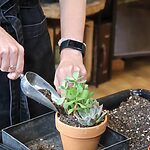
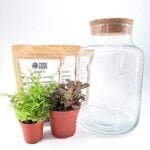
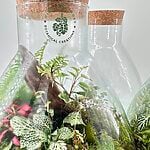
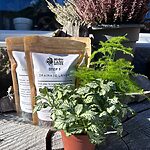

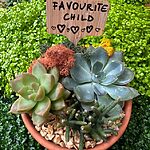
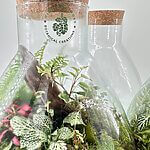


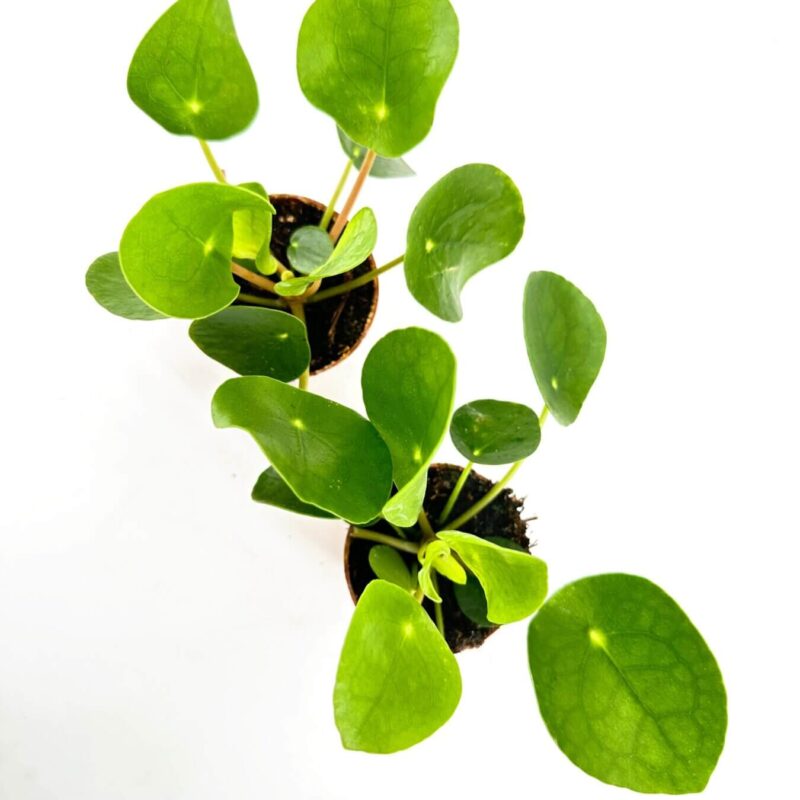




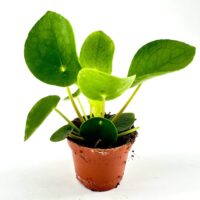
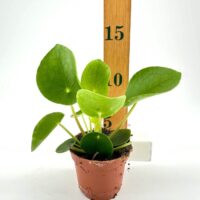
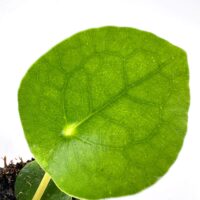
Amazing, personalised customer service! Always very friendly, approachable and dedicated. Thank you!
Items were as described, delivered promptly and very well packaged. Would order from this company again.
First time buyer from here. Prompt delivery Postage is a bit steep for what was a small order but overall satisfied and will buy from here again
I love working with the soils,plants and mosses from Highland Moss Co. The quality is exceptional and stunningly beautiful. Highly recommended.